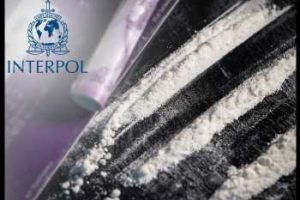Massive Drug Seizures, 1333 Arrests In Intrerpol-led Global Operation

Illicit narcotics and precursor chemicals worth more than $7170 million were seized and 1,333 suspects arrested in a massive operation coordinated by Interpol worldwide.
The 39-day “Operation Lionfish V” started on June 23 targeted the trafficking of illicit drugs along air, land and maritime routes in 22 countries via a coordinated cross-border approach.
More than 291 tons of precursor chemicals and 35.5 tons of narcotics were seized.
While traditional drugs like cocaine and cannabis continue to represent a significant share of the illicit drugs market, the operation underscored the rise in the production and sale of synthetic drugs such as methamphetamine, Captagon and ketamine, Interpol said in a press release.
Criminal organizations produce an endless supply of synthetic drugs using precursor chemicals that fetch them a very high profit margin. The production of synthetic drugs does not rely on environmental or external factors like cocaine and heroin and can be manufactured in urban settings close to major transportation hubs.
During the five-week operation authorities recovered 1.8 tons of ketamine, 683 kg of methamphetamine and 581 kg of Captagon.
Significant seizures also included 20.2 tons of cocaine; 11.7 tons of cannabis; 158 kg of heroin; 65,100 tablets and 48 kg of Tramadol; 9,500,000 pseudoephedrine tablets used to manufacture methamphetamine; and dozens of firearms, rockets and explosives.
A clandestine super-lab capable of producing thousands of kilograms of ketamine was dismantled in Cambodia, where police arrested an individual wanted internationally on an Interpol Red Notice for alleged transnational drug smuggling offences.
The arrested drug mafia members belonged to 25 different nationalities.
Indian authorities made the largest single seizure of heroin during the operation after 75.3 kg of the drug were intercepted in the Port of Mundra. .
The operation showed that traffickers use various types of transport modes to smuggle their narcotics including containerized maritime cargo, air couriers, postal/express mail services, commercial vehicles, GOFAST vessels and small aircraft.
Source: Read Full Article
